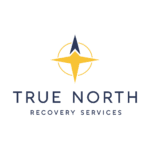For individuals in recovery from substance use disorders, panic attacks present a unique challenge that requires drug-free coping strategies. The intersection of anxiety disorders and addiction recovery demands effective, evidence-based techniques that don’t rely on substances. Learning to navigate panic attacks without turning to drugs or alcohol is not just possible—it’s essential for maintaining sobriety and building resilience. This comprehensive guide explores practical, proven methods to help you regain control when panic strikes.
Understanding Panic Attacks in Recovery
What Are Panic Attacks?
A panic attack is a sudden episode of intense fear that triggers severe physical reactions when there’s no real danger present. These attacks can feel overwhelming, especially for those in recovery who previously used substances to cope with anxiety.
Common symptoms include:
- Rapid heartbeat or palpitations
- Sweating and trembling
- Shortness of breath or feeling of choking
- Chest pain or discomfort
- Nausea or abdominal distress
- Dizziness or lightheadedness
- Fear of losing control or dying
Why Do Panic Attacks Occur During Recovery?
Recovery brings significant changes to both brain chemistry and daily routines. Without substances that previously masked anxiety, individuals often experience heightened emotional sensitivity. The brain needs time to rebalance neurotransmitters, which can temporarily increase vulnerability to panic attacks.
Can You Stop a Panic Attack Without Medication?
Yes, panic attacks can be effectively managed without medication through evidence-based techniques. Cognitive behavioral therapy, breathing exercises, grounding methods, and lifestyle modifications have proven highly effective in stopping and preventing panic attacks. The key is learning to recognize early warning signs and implementing coping strategies before the attack peaks.
Immediate Techniques to Stop a Panic Attack
The 5-4-3-2-1 Grounding Method
This sensory awareness technique helps anchor you to the present moment, interrupting the panic cycle.
How to practice:
- Identify 5 things you can see around you
- Acknowledge 4 things you can touch
- Notice 3 things you can hear
- Recognize 2 things you can smell
- Name 1 thing you can taste
This method redirects your brain from panic thoughts to concrete sensory experiences, effectively breaking the anxiety spiral.
Box Breathing Technique
Controlled breathing directly counteracts the hyperventilation that fuels panic attacks. Box breathing provides a simple, structured approach.
Steps:
- Inhale slowly through your nose for 4 counts
- Hold your breath for 4 counts
- Exhale completely through your mouth for 4 counts
- Hold empty for 4 counts
- Repeat for 5-10 cycles
Progressive Muscle Relaxation
Physical tension amplifies panic sensations. By systematically tensing and releasing muscle groups, you signal your nervous system to calm down.
Start with your toes and work upward: tense each muscle group for 5 seconds, then release completely for 10 seconds. Notice the difference between tension and relaxation as you move through your body.
Long-Term Strategies for Prevention
Cognitive Behavioral Therapy (CBT)
CBT remains the gold standard for treating panic disorder without medication. This therapeutic approach teaches you to:
- Identify and challenge catastrophic thoughts
- Reframe panic symptoms as uncomfortable but not dangerous
- Develop healthier thought patterns
- Build confidence in managing anxiety
A trained therapist guides you through exposure exercises that gradually reduce fear responses over time.
Lifestyle Modifications That Matter
| Area | Action Steps | Impact on Panic |
|---|---|---|
| Sleep | Maintain 7-9 hours nightly | Stabilizes stress hormones |
| Caffeine | Limit to 200mg daily | Reduces physical arousal |
| Exercise | 30 minutes, 5x weekly | Releases natural anxiety relievers |
| Nutrition | Regular balanced meals | Prevents blood sugar crashes |
| Alcohol | Complete avoidance | Eliminates trigger and protects recovery |
Mindfulness and Meditation
Daily mindfulness practice rewires your brain’s response to stress. Even 10 minutes of meditation can significantly reduce panic frequency.
Simple mindfulness exercise:
Sit comfortably and focus on your breath. When thoughts arise, simply notice them without judgment and return attention to breathing. This builds the mental muscle to observe panic sensations without reacting to them.
What Triggers Panic Attacks?
Panic attack triggers vary by individual but commonly include stress, caffeine, lack of sleep, and fear of having another attack. For those in recovery, triggers may also include withdrawal symptoms, major life changes, social situations, or reminders of past substance use. Identifying your personal triggers through journaling helps you develop targeted prevention strategies.
Understanding the Panic Cycle
Panic attacks follow a predictable pattern that you can learn to interrupt:
- Trigger phase: Internal or external cue activates anxiety
- Physical response: Heart rate increases, breathing changes
- Catastrophic thinking: “I’m having a heart attack” or “I’m losing control”
- Peak intensity: Symptoms reach maximum around 10 minutes
- Resolution: Symptoms gradually decrease
Understanding this cycle removes much of the fear. Panic attacks always pass, typically within 20-30 minutes, and cannot cause the catastrophic outcomes you fear.
How Do You Know If You Have Panic Disorder?
You may have panic disorder if you experience recurrent unexpected panic attacks and spend at least one month worrying about future attacks or changing your behavior to avoid them. This differs from occasional panic attacks—panic disorder involves persistent fear that significantly impacts daily functioning. Professional evaluation is essential for accurate diagnosis and treatment planning.
Creating Your Panic Attack Action Plan
Before an Attack
- Practice breathing and grounding exercises daily
- Identify your personal warning signs
- Prepare a comfort kit (stress ball, essential oils, calming music)
- Share your plan with trusted supporters
During an Attack
- Remind yourself: “This is uncomfortable but not dangerous”
- Implement box breathing immediately
- Use the 5-4-3-2-1 grounding technique
- Stay in the situation rather than fleeing
- Use positive self-talk: “I’ve survived this before”
After an Attack
- Avoid self-criticism
- Journal about triggers and what helped
- Practice self-compassion
- Review what worked for future reference
Natural Supplements and Alternatives
While not replacements for therapy, certain natural approaches may support anxiety management:
Evidence-supported options:
- Omega-3 fatty acids: Support brain health and mood regulation
- Magnesium: Helps nervous system function
- L-theanine: Promotes relaxation without sedation
- Chamomile tea: Gentle calming effect
Important: Always consult your healthcare provider before adding supplements, especially in recovery when avoiding substance interactions is critical.
When Professional Help Is Necessary
Seek immediate professional support if you experience:
- Panic attacks that worsen or increase in frequency
- Avoidance behaviors that limit daily activities
- Depression or thoughts of self-harm
- Inability to function at work or in relationships
- Strong urges to use substances to cope
Early intervention prevents panic disorder from becoming debilitating and protects your recovery journey.
The Connection Between Anxiety and Substance Use
Understanding this relationship is crucial for recovery success. Many people initially used substances to self-medicate anxiety symptoms. However, substance use ultimately worsens anxiety through:
- Disruption of neurotransmitter balance
- Rebound anxiety during withdrawal
- Decreased ability to cope with stress naturally
- Physical health complications that trigger panic
Recovery offers the opportunity to address underlying anxiety disorders properly and develop sustainable coping mechanisms.
Building a Support System
Recovery from both anxiety and addiction requires connection. Effective support includes:
Professional support:
- Therapist specializing in dual diagnosis
- Recovery coach or sponsor
- Psychiatrist for medication evaluation if needed
Peer support:
- Support groups (AA, NA, SMART Recovery)
- Online recovery communities
- Anxiety-specific support groups
Personal support:
- Trusted friends and family
- Recovery accountability partners
- Sober social activities
Recovery Success Stories: What Works
Research consistently shows that combining multiple approaches yields the best outcomes. Successful management typically includes:
- Regular therapy (weekly or biweekly)
- Daily stress management practices
- Strong recovery program participation
- Healthy lifestyle habits
- Medication when appropriate
- Ongoing self-education about anxiety
Remember that recovery is not linear. Setbacks happen, but each challenge offers valuable learning opportunities.
FAQ: Quick Answers to Common Questions
How long do panic attacks last?
Most panic attacks peak within 10 minutes and resolve completely within 20-30 minutes, though some people may feel drained for hours afterward.
Can panic attacks cause heart attacks?
No. While panic attacks mimic heart attack symptoms, they do not damage your heart or cause heart attacks in otherwise healthy individuals.
Why do panic attacks happen at night?
Nighttime panic attacks often result from stress, sleep disruption, or your body’s relaxed state making you more aware of physical sensations that trigger anxiety.
Is it possible to have only one panic attack?
Yes. Many people experience a single panic attack during extreme stress and never have another, especially when they address underlying stressors.
Finding Professional Support in Recovery
At True North Recovery Services, we understand that managing anxiety disorders and substance use requires comprehensive, compassionate care. Our outpatient treatment programs in Denver integrate evidence-based therapy for both addiction and mental health conditions, including panic disorder. We offer individualized treatment plans that address the root causes of anxiety while supporting your recovery journey. Our experienced team provides the tools, therapy, and community support necessary to manage panic attacks effectively without substances, helping you build a foundation for lasting recovery and wellness.
Your Path Forward
Managing panic attacks without substances is a learnable skill that becomes easier with practice. By understanding your triggers, implementing evidence-based techniques, and building a strong support system, you can regain control over anxiety while maintaining your recovery. Remember that seeking help is a sign of strength, not weakness. Every step you take toward healthier coping mechanisms strengthens both your mental health and your sobriety.
The journey may feel challenging, but countless individuals have successfully learned to navigate panic attacks without relying on substances. With patience, persistence, and proper support, you can too.


